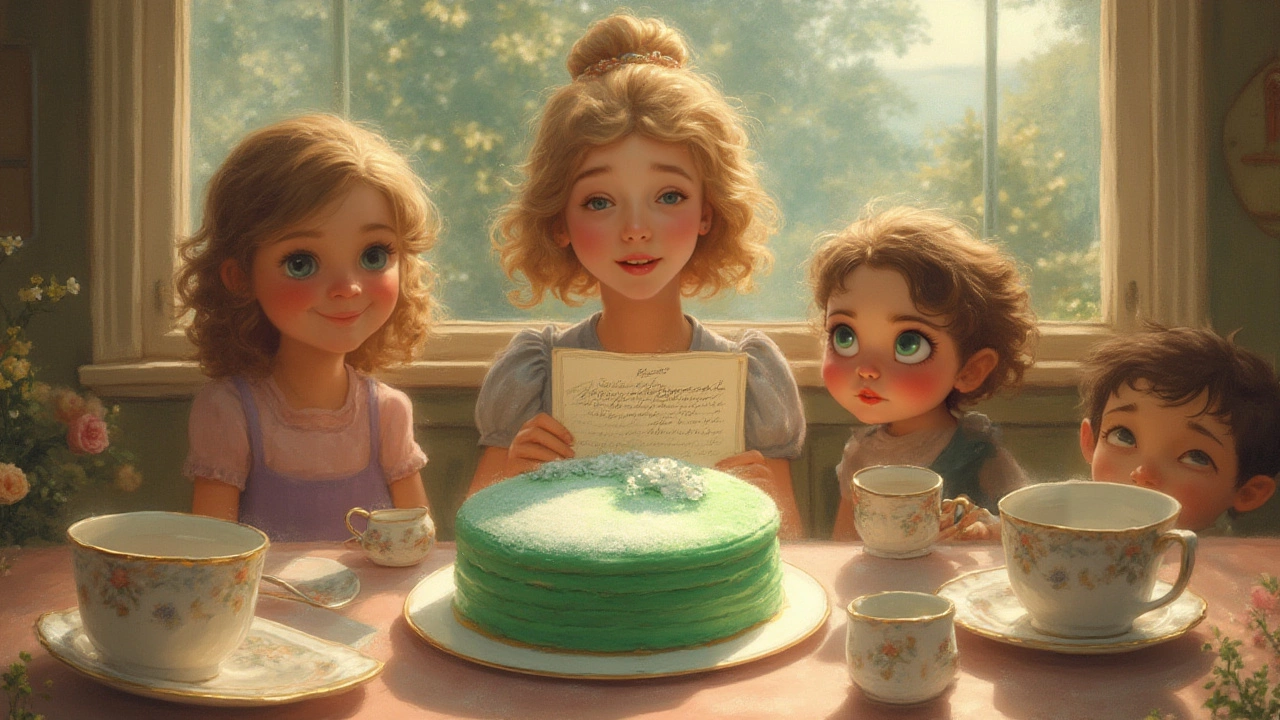
If you’ve ever seen a princess cake, with its glossy green marzipan dome and blushing pink rose on top, you know it's more than just a cake. It's the sort of dessert that stops you in your tracks. The name itself sounds like a fairytale promise — but why exactly is it called a princess cake? More than just a catchy name, there’s a story swirling beneath that pastel surface, and it’s woven into Sweden’s royal family tree, a trio of princess sisters, and a recipe passed down for generations. Pick up a fork: there’s history, tradition, and, of course, a whole lot of whipped cream hiding under that green shell.
The Surprising Swedish Roots of Princess Cake
Digging into the story, you find yourself in early 20th-century Sweden. Take a step back to the 1930s: that's when the now-beloved prinsesstårta (which literally means "princess cake" in Swedish) was born. The origin traces to the royal court, specifically to three daughters of Prince Carl of Sweden—Princesses Margaretha, Märtha, and Astrid. These sisters weren't just royalty; they practically set the trend for cakes in their day. The palace’s home economics teacher, Jenny Åkerström, started teaching the princesses how to cook and bake. In 1929, Jenny published a cookbook called "Prinsessornas kokbok" (The Princesses’ Cookbook), which included the recipe for a lavish cake that was originally called Grön tårta, or “green cake.” That verdant green marzipan wasn’t a royal accident; it’s what made the cake stand out from the crowd of ordinary sponge cakes.
But the cake was so loved by the princesses that, over time, it earned a new name—prinsesstårta. And the name stuck, thanks to their popularity and how much the royals doted on this cake. People started associating the recipe with the princesses, so calling it anything else just felt wrong. With this, “princess cake” became a royal standard for Swedish celebrations—birthdays, graduations, midsummer, and even baptisms.
One fun fact: Sweden celebrates Princess Cake Week every September, typically the third week. Bakeries all over the country sell more than half a million cakes in those seven days—think about it, that’s nearly one prinsesstårta for every twenty Swedes! Talk about national cake fever.
Here’s a quick snapshot of the historical timeline:
| Year | Event |
|---|---|
| 1929 | Jenny Åkerström publishes 'The Princesses' Cookbook' with the “green cake” recipe. |
| 1930s | Cake becomes closely linked with the three princesses, earning it the Prinsesstårta name. |
| Mid-20th Century | Green marzipan becomes the signature look for the cake. |
| 2004 | Sweden introduces Princess Cake Week. |
How did it go global? Swedish immigrants brought the tradition with them, and bakeries from the U.S. to Australia now proudly showcase princess cake in their windows. Chefs sometimes update the look with pastel purples or blues, and yet the classic green—and that flirty pink rose—remain the sign of the real deal.

What Makes A Princess Cake: Layers, Flavors, and That Green Marzipan
This isn’t your basic cake. A classic princess cake has layers—lots of them. First comes a springy, airy sponge cake, light on the tongue but just sturdy enough to hold up beneath the next element: an ocean of whipped cream. Then there’s vanilla custard, rich but fluffy, tucked within. More sponge, another tumble of whipped cream, and, depending who you ask (and which recipe you swipe), a thin layer of raspberry jam, usually sandwiched right in the middle. Some bakers add just a whisper of jam, while others spread it generously for sharper contrast. Then comes the iconic finish: a dome of green marzipan, hand-rolled, laid tenderly over the top, and smoothed to glassy perfection.
There’s a reason for each part. The sponge absorbs the custard and cream without turning to mush, kind of like sponge cake armor. The custard balances out the sweetness of the whipped cream. And that marzipan dome? It’s more than just a pretty face. Marzipan locks in the moisture, so the cake stays luscious for days, and its almondy flavor cuts through the cream for a grown-up kick. Don’t forget about that sugar-paste rose—if you want the real princess treatment, it has to be pink. Some traditional bakers even dust the marzipan with a cloud of powdered sugar for an extra fairy-tale shimmer right before serving.
What if you want to try making your own? It’s totally doable, even for beginners (though your kitchen may look like a mini-marzipan factory afterward). The trickiest part is definitely the marzipan: it takes patience to roll it thin, drape it gently, and press out bubbles without any tears. Pro tip? Dust your hands and rolling pin with powdered sugar so nothing sticks. And don’t worry if your dome isn’t perfect—homemade bumps and ridges only prove it's the real deal.
For anyone on the fence about marzipan, here’s something interesting: in Sweden, most grocery stores sell tubes of pre-colored green marzipan just for princess cake. But if you want to flex your creativity, add a drop of blue or yellow food dye to plain marzipan and knead it in for your own custom color. Swap the pink rose for purple, scatter edible gold flakes, or go wild with rainbow layers inside; bakers have gotten imaginative, but purists say you can't beat the original throne-worthy combo.
- Tip: Always chill the cake well before adding the marzipan dome. A cold cake means fewer chances of sticky disasters.
- Shortcut: Buy ready-made marzipan sheets for a super-smooth dome, available online and in international grocery stores.
- Fun twist: Swap raspberry for strawberry or lingonberry jam if you're feeling Nordic.
Swedes often serve princess cake at “fika,” their beloved coffee-and-cake break. If ever a cake earned royal status in a country, it’s this one. And, honestly, there’s something about slicing into those pastel layers that makes even Tuesday afternoons feel fit for a crown.
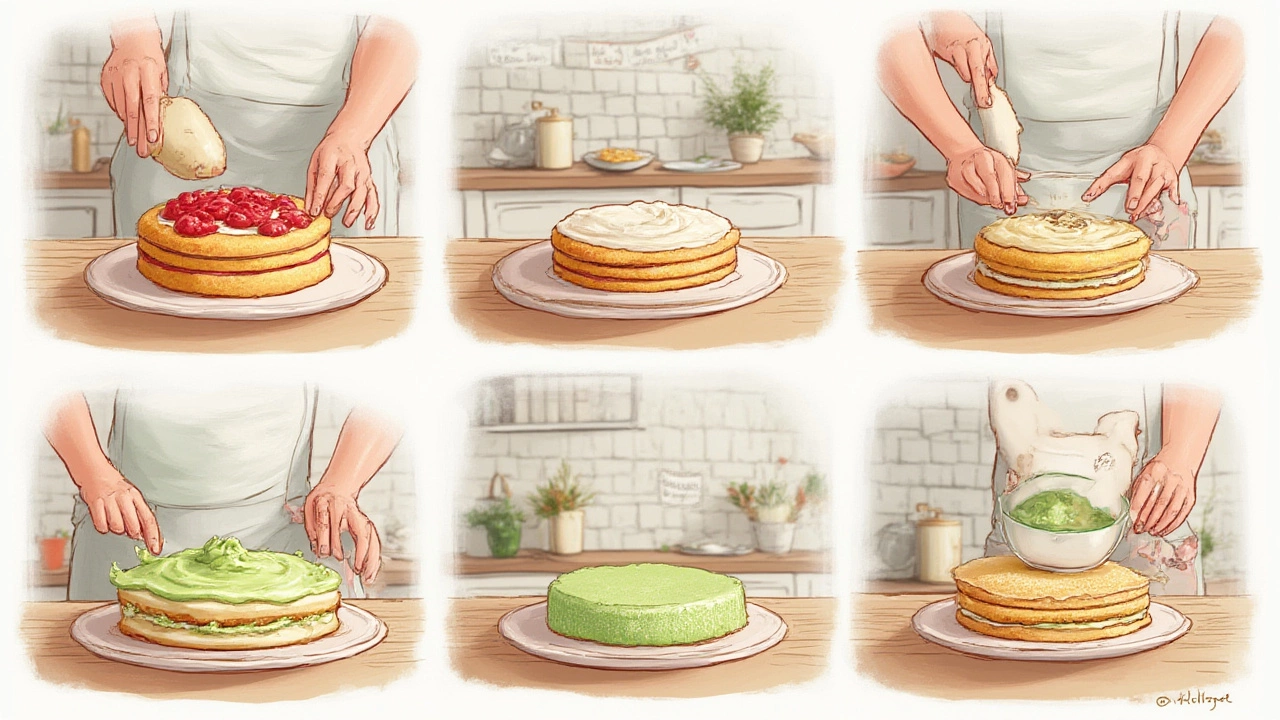
Modern Takes, Celebrations, and Princess Cake Around the World
Fast forward to 2025, and the princess cake is as popular as ever—maybe even more. Swedish bakeries report that they sell over 200,000 princess cakes each year, with a massive spike during Princess Cake Week every September. But it's not just a Nordic affair anymore; patisseries in Paris, New York, and Tokyo have all jumped on the royal bandwagon. Some swap out the green dome for bold hues like lavender or pale yellow, matching the flavors inside—lemon custard or chocolate sponge, for example. But even after all the dizzying upgrades, nostalgia always pulls bakers and eaters back to that classic combo: vanilla, raspberry, cream, and almond.
There’s even a Swedish saying: "Ingen fest utan prinsesstårta"—"No party without a princess cake." Swedes eat it for everything, from preschool graduations to grandma’s birthday. Sometimes the cake serves as a peace offering at Swedish office meetings or appears at weddings for a playful touch. And, no lie, there’s been a trend among home bakers of making mini-princess cupcakes, perfect little domes to pop in your mouth or hand out at kids’ parties. Some bakers like to add edible glitter, gold dust, or even a drizzle of chocolate ganache over the marzipan: the royal cake adapts.
Beyond Sweden, corners of Minnesota, Seattle, and Australian suburbs boast their own take, thanks to Swedish immigrants passing down the “secret” recipe. Some communities gather for annual princess-cake judging contests, and there’s even a rumor that a certain royal fan in London orders a Swedish princess cake for her birthday every year. It’s clear the charm of this dessert reaches far beyond the fjords.
Looking to host your own royal celebration? Here’s what the modern princess cake lover might do:
- Pair slices with Scandinavian coffee for a classic fika feel.
- Host a DIY princess cake decorating party—let friends roll their own marzipan and make mini cakes.
- Use natural food colors to tint marzipan for vibrant, Instagrammable domes.
- Offer allergy-friendly versions with gluten-free sponge or dairy-free custard—so everyone gets a slice.
- Try freezing leftover cake: it thaws beautifully, and the marzipan keeps the cake ultra-moist.
If you’re ever in Sweden in September, don’t skip the chance to share in Princess Cake Week and taste a slice the way it was meant to be eaten—fresh, local, and brimming with royal legacy. Whether you’re baking one from scratch or buying a slice at a fancy café, just remember you’re biting into a piece of history, straight from palace kitchens to your own table. Not bad for a cake that started as a princesses’ home economics project.



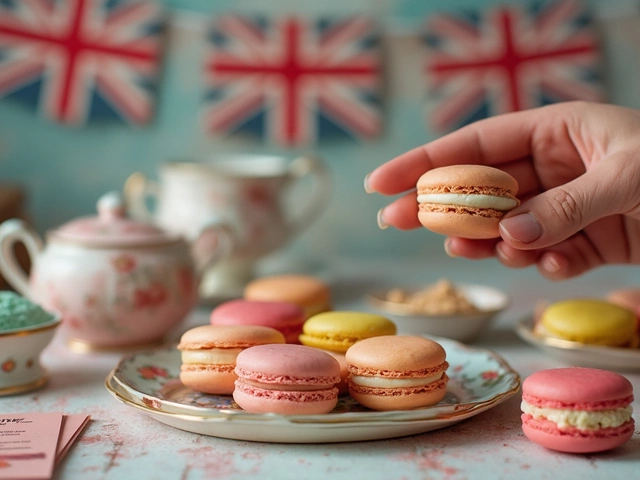

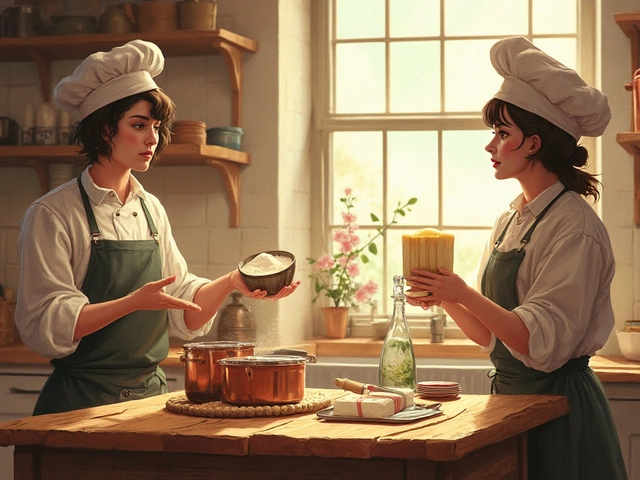

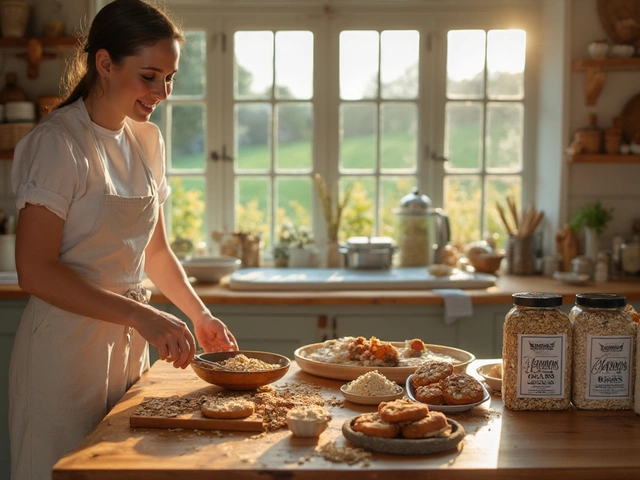
Write a comment